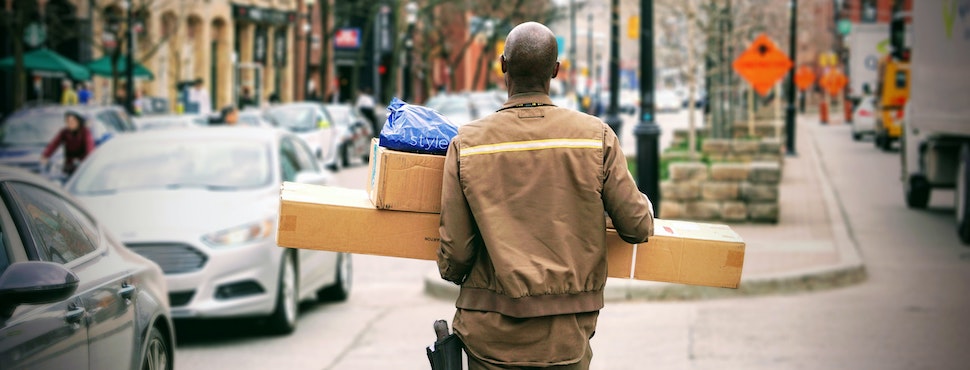If COVID-19 taught us anything about shopping habits in the UK, it’s that consumers didn’t let the closure of high street stores stop them from spending money. The e-commerce boom that we saw during the three month lockdown put extra pressure on online shops to fulfill a massive influx of orders that ordinarily may not have happened in such a short space of time. And our hats go off to the delivery drivers who worked tirelessly to try and ensure parcels and packages were still being delivered.
Recent ONS statistics showed that internet sales as a percentage of total retail sales reached 32.8% in May, in comparison to just 18.9% in February (prior to lockdown). But of course, this surge in online shopping – and home deliveries as a result – is now starting to cause concern for the environment.
A recent report in The Times suggests that now Brits may no longer be able to benefit from free deliveries as scientific advisors to the Department for Transport consider the idea to implement a compulsory delivery charge on all online orders, in an attempt to help combat traffic congestion and emissions through cutting down on “unnecessary over-ordering” online. The mandatory charge could be seen as comparable to the 5p plastic carrier bag charge enforced some years ago, to encourage more environmentally-friendly and sustainable behaviour.
This news may be met with some negativity from the few retailers who do currently offer this, but I don’t think this in itself should be a major concern. Our ‘UK E-Commerce Shipping Study 2020: Fashion Edition’ found that only 12 of the top 100 fashion retailers actually offer free shipping to their customers and another 65 only offer it once a minimum order value (MoV) has been reached. Otherwise, the average amount is £4.46.
Yes, the logistics and delivery of items purchased online can have a huge impact on carbon emissions – in fact, shipping is often the largest contributor to any company’s carbon footprint. And we should all be doing our part to ensure that retailers are transparent about their sustainability policies and practices. But it’s important to remember that customers aren’t necessarily bothered by having to pay a delivery fee – they are more concerned with getting a broad, consistent, flexible and good value delivery choice from retailers, and being kept in the know about their order – and if it’s done sustainably, then even better!
This is where retailers need to up their game to prepare for what could inevitably be a step change for retail. Consumers are already used to paying for delivery – it’s when they get a poor customer experience during the delivery stage of the journey, that countless customer service issues arise as they are left in the dark about where their package is and when it will arrive.
If this new compulsory delivery charge does come into force, retailers need to plan ahead and consider the post-purchase stage of the customer journey, including their delivery and returns strategy, to lessen the impact. A huge part of this comes down to increasing engagement with customers during this stage with proactive post-purchase communications, not only to drive customer retention and loyalty, but to potentially reduce the need for returns and thus the carbon footprint. For example, if retailers don’t communicate with their customers actively at the point of delivery, this can result in missed delivery and subsequent delivery attempts which wastes fuel.
Post-purchase communications can be a highly engaging way of getting messages across and keeping customers up to date on a range of things like transparent sustainability policies and practices, information on how to dispose / recycle or re-use packaging to reduce the impact on the environment. This channel could even be used to include a count of how this new charge is contributing positively to the impact on the environment.
Retailers should also consider the range of delivery options and look at green delivery slots, to combine similar orders by location to reduce the number of individual journeys. As we return to ‘normal’, there will likely be an increase in popularity of Click & Collect and Locker pick-ups, which again, is something that should be offered as an option to give customers choices. The same goes for return options – for example, where possible, there should always be an in-store return option which enables customers to find their nearest store. It’s also worth offering a reward scheme or incentive for sustainable shoppers.
It has always been about ensuring your customers get an excellent customer experience – across every touchpoint in their purchasing journey. This compulsory green delivery charge in itself won’t have an impact on customer retention and loyalty. Actively communicating and making your customers feel ‘looked after’ is the only way to make them feel less frustrated, more engaged, happy and wanting to come back again and again.
By Katharine Biggs, Content & Marketing Manager at parcelLab
Originally published Postal and Parcel Technology International | July 2020
Photo by Maarten van den Heuvel on Unsplash

